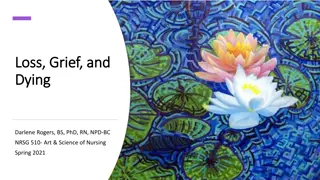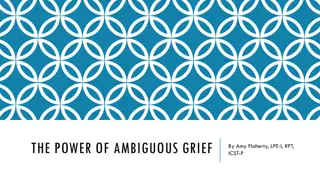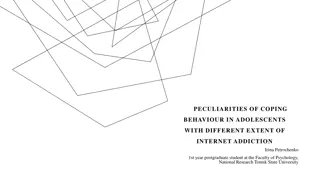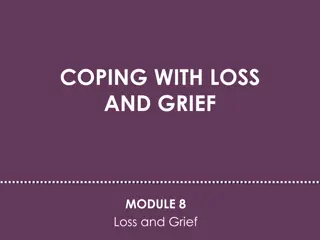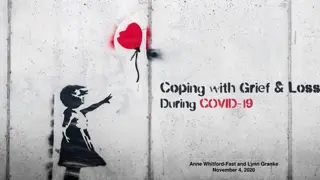The Theories of Loss and Bereavement: Understanding Grief Stages and Coping Mechanisms
Explore theories such as Bowlby's Attachment Theory, Murray-Parkes' theory of an Assumptive World, Peter Marris' Structures of Meaning, and Murray-Parkes Bereavement Model. These theories delve into the stages of grief, ranging from protest and despair to acceptance, offering insights into how individuals cope with loss and navigate the grieving process.
Download Presentation

Please find below an Image/Link to download the presentation.
The content on the website is provided AS IS for your information and personal use only. It may not be sold, licensed, or shared on other websites without obtaining consent from the author.If you encounter any issues during the download, it is possible that the publisher has removed the file from their server.
You are allowed to download the files provided on this website for personal or commercial use, subject to the condition that they are used lawfully. All files are the property of their respective owners.
The content on the website is provided AS IS for your information and personal use only. It may not be sold, licensed, or shared on other websites without obtaining consent from the author.
E N D
Presentation Transcript
Module1Unit 1 The Theories of Loss
Bowlbys Attachment Theory. Bowlby identified three phases, which he thought were typical of what happens when separation occurs: Protest Despair Detachment
The protest phase results in anger, tears and refusal to accept that the attachment figure is no longer around Despair follows when hope that the separation is not real has finally gone When acceptance that the loss is real happens, there is a sense of detachment, which sometimes manifests itself as indifference.
Murray-Parkes theory of an Assumptive World This theory is based on his view that we tend to live in a world of assumptions. Problems arise when our assumptive worlds mean that we neglect to factor-in , so to speak, that all living things die and that includes ourselves and those we love and care about. When the assumptive world is overturned, especially by an unexpected death, it is a shattering experience. A grieving person will, over time, create a new world - a world which no longer contains the deceased - this does not mean Time heals , a phrase which research shows is greatly disliked by the bereaved. Assumptions and beliefs about life have been changed by the death and remembering this can help with the sensitivity.
Peter Marris and Structures of Meaning Marris thinks that humans have an inbuilt resistance to change - he calls it the conservative impulse . We resist change because its uncomfortable and we are unable to predict the outcome. Marris thinks that we make sense of the world we live in by creating what he calls structures of meaning . After a death this profoundly changes and people wish for things to go back to the way they were.
A theory helps us to answer the WHY questions about peoples behaviours. A Model is different from a theory, because it aims to describe HOW people might behave in a given set of circumstances. Murray-Parkes Bereavement Model Stage 1 Shock and Disbelief (characterised by bewilderment, numbness, disorientation) Stage 2 Denial - not unlike Bowlby s protest phase, with anger added to the Stage I feelings Stage 3 Growing awareness (a time of great pain, with longing and yearning for the lost person and a whole range of powerful emotions). Stage 4 Acceptance (reorganisation and recovery takes place).
One of the best known models of bereavement is Wordens Four Tasks of Mourning, which are: 1. To accept the reality of the loss 2. To experience the pain of Grief 3. To adjust to an environment which no longer contains the deceased 4. To re-invest emotion and move on with life



